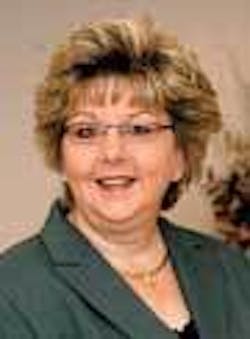Financing Decisions
If you are a new dentist, you might be purchasing a practice, buying into an established practice, or starting a practice. If you are established, you might want to upgrade your equipment, add new technology, or build or purchase a building. Financing is an integral part of this process.
If you’re starting a practice, it can be difficult to obtain financing because you lack a record. Don’t forget to include sufficient working capital to cover start-up costs such as legal, accounting, and state-filing fees, and initial office expenses that will be incurred until collections become predictable and plentiful.
Compile a list of equipment, building statistics, or practice purchase information and submit that request to several lenders. Try a bank with which you already have a business relationship and a competing bank. Consider including the financial company that your equipment dealer uses to give you options. Separate your debt into two segments: one for equipment financing, and the other for the build-out or purchase. Traditionally for equipment or practice purchases, you will finance for five or seven years. Building purchase terms are longer, such as 30 years. Also overlooked but crucial is in which entity or name the debt should be.
When you compare loan options, look at interest rates, terms of the loan, and prepayment penalties. Once you obtain three or more offers, the best will be clear.
If you purchase an established practice, you might be able to obtain some financing from the selling dentist for the equipment and practice. It would be an investment for the seller, who receives interest income from holding the loan for you as the purchaser, and it helps you be more attractive to outside financers when you seek financing for the remaining portion of the debt. Sellers often offer the loan for a specific time, at the end of which you must seek alternative financing. This allows you to create a history of running the practice and maintaining good payments. Your credit record is important.
As you become better established, you may make smaller equipment purchases directly from an existing line of credit, or you may use excess cash that you have in the business account. Careful budgeting and planning will help you know if you have surplus funds or if financing is the better option.
There are tax benefits to purchasing equipment, buildings, build-outs, or practice costs, and this should be part of your decision-making. Timing the purchase for cash flow and tax benefits requires prior planning. You will become more comfortable with practice operation and gain an awareness of how much income is required to pay all the normal operating expenses as well as the equipment and or practice debt. Having the cash to pay the loan and the offsetting tax benefit of depreciation is a separate yet important consideration. Looking at these carefully will make it apparent when you wisely can increase your debt load.
A common misperception is that the entire payment is deductible. Only the interest portion of the payment is a tax deduction. The principal portion is repaying the loan proceeds borrowed initially.
No matter at what stage you are in your practice, you will periodically need to borrow money. Always remember to utilize your professional resources such as your dental accountant, banker, and equipment company to assure that these decisions are wise, well-informed ones.
Darla Pilgrim, EA
Pilgrim is a principal in Gray, Pilgrim, and Associates, LLC. An Academy of Dental CPAs member located in Chambersburg, Penn., the firm specializes in tax- and management-consulting services for health care professionals. Reach Pilgrim at (717) 263-8713 or [email protected].

